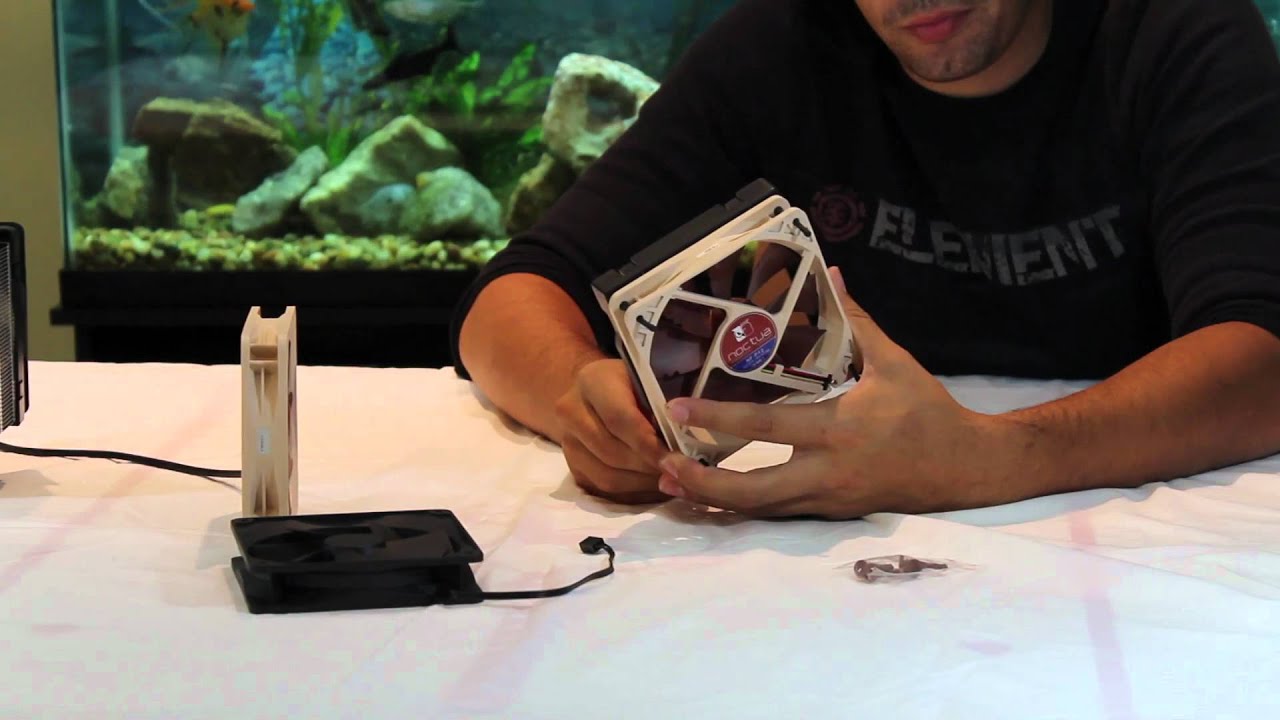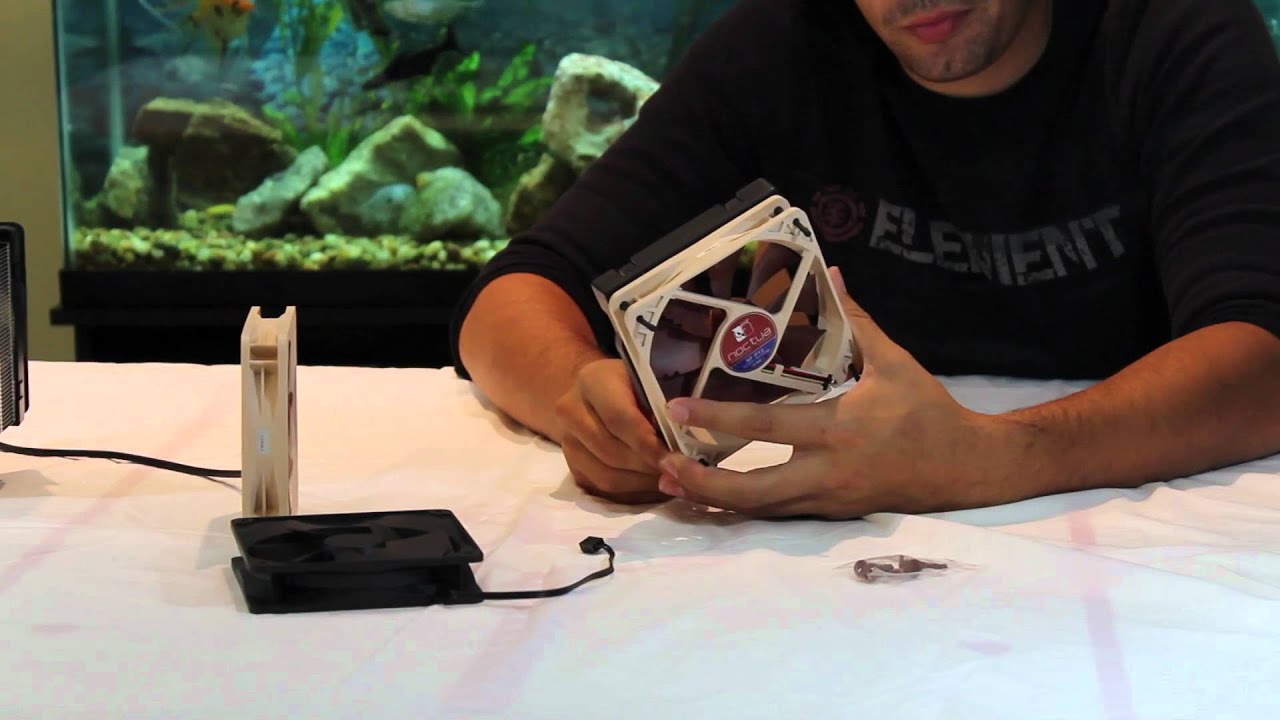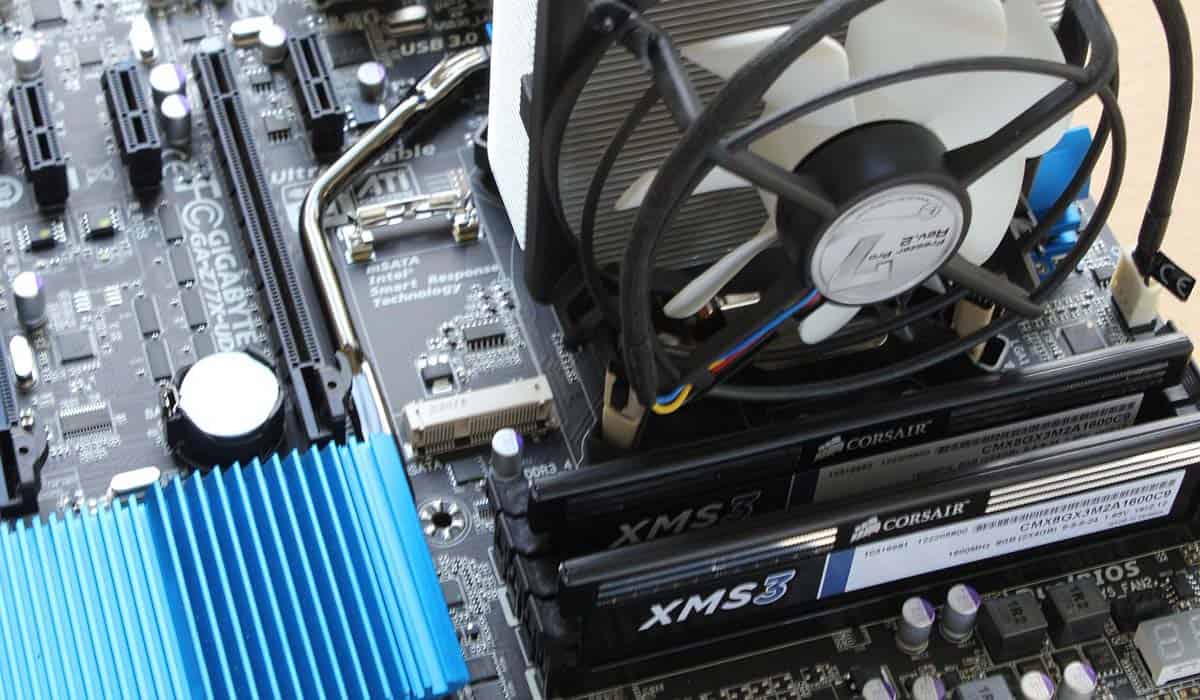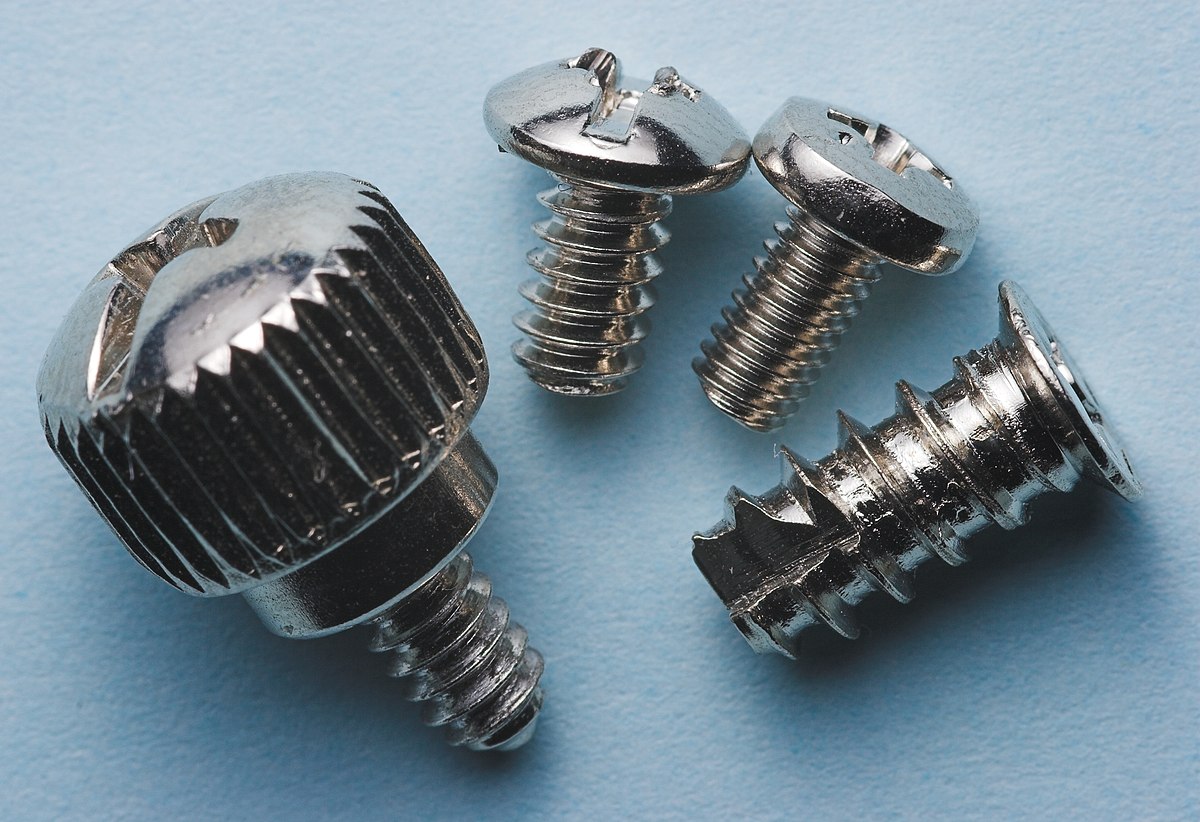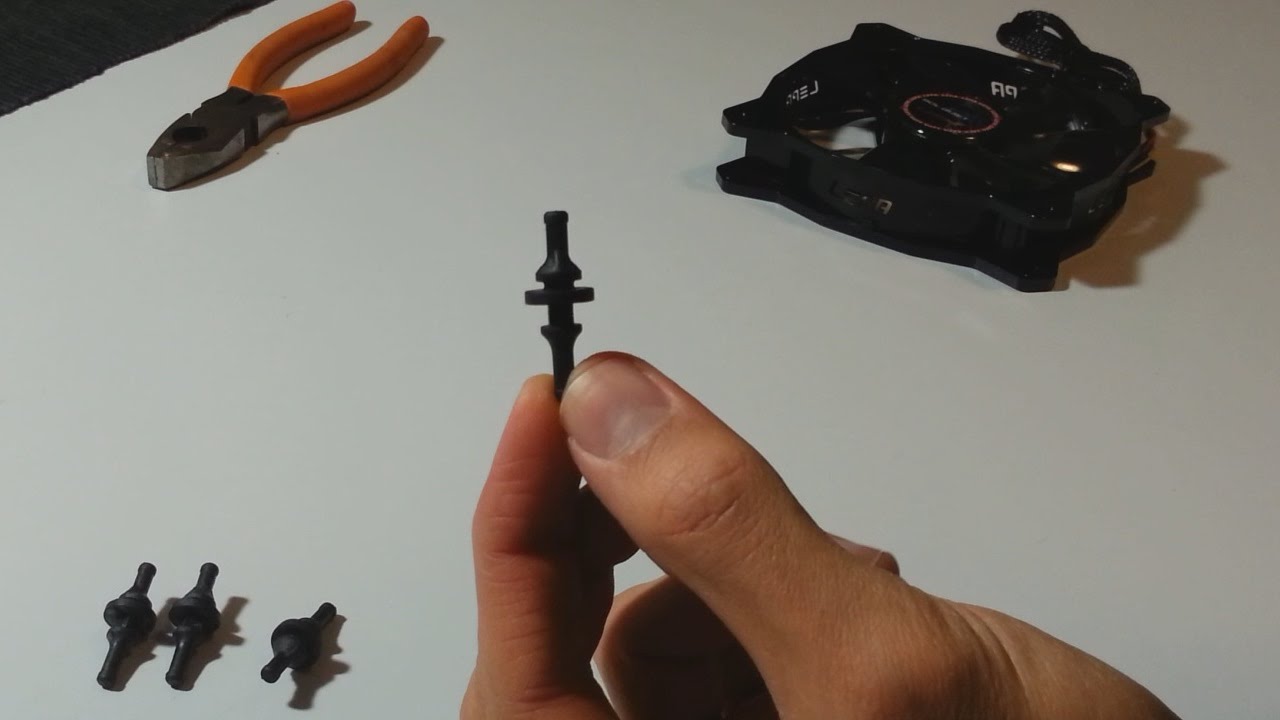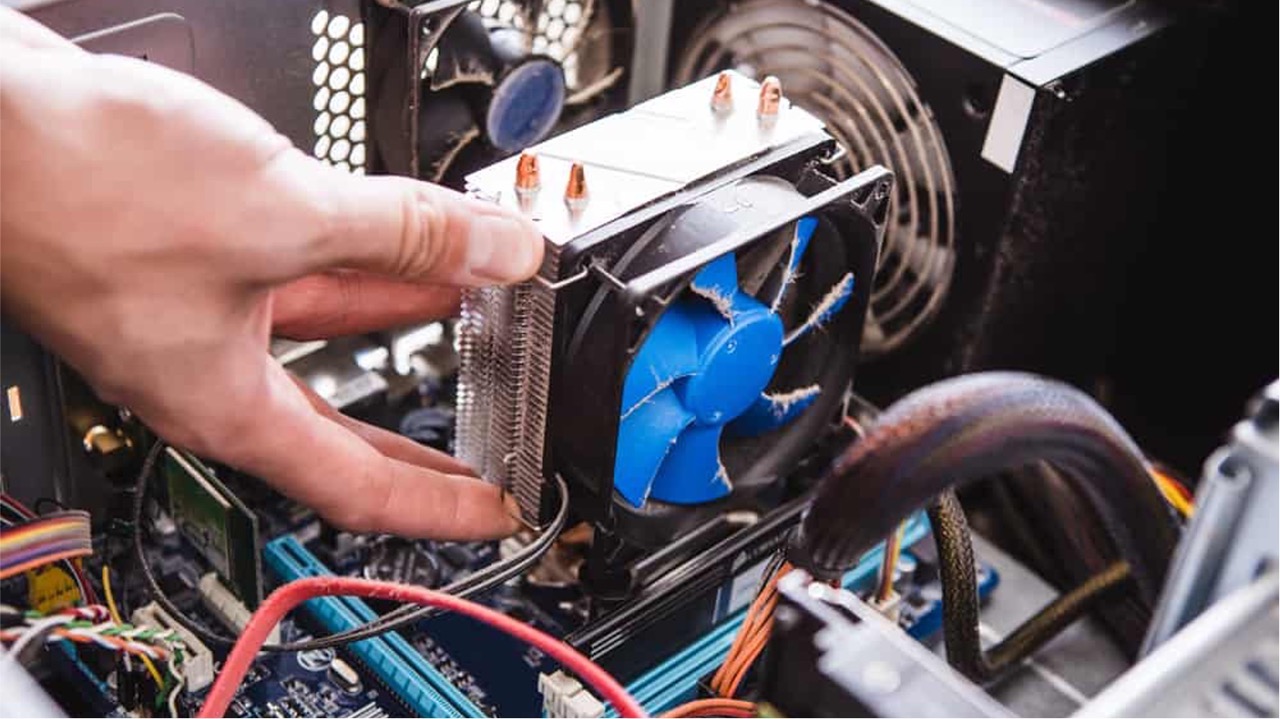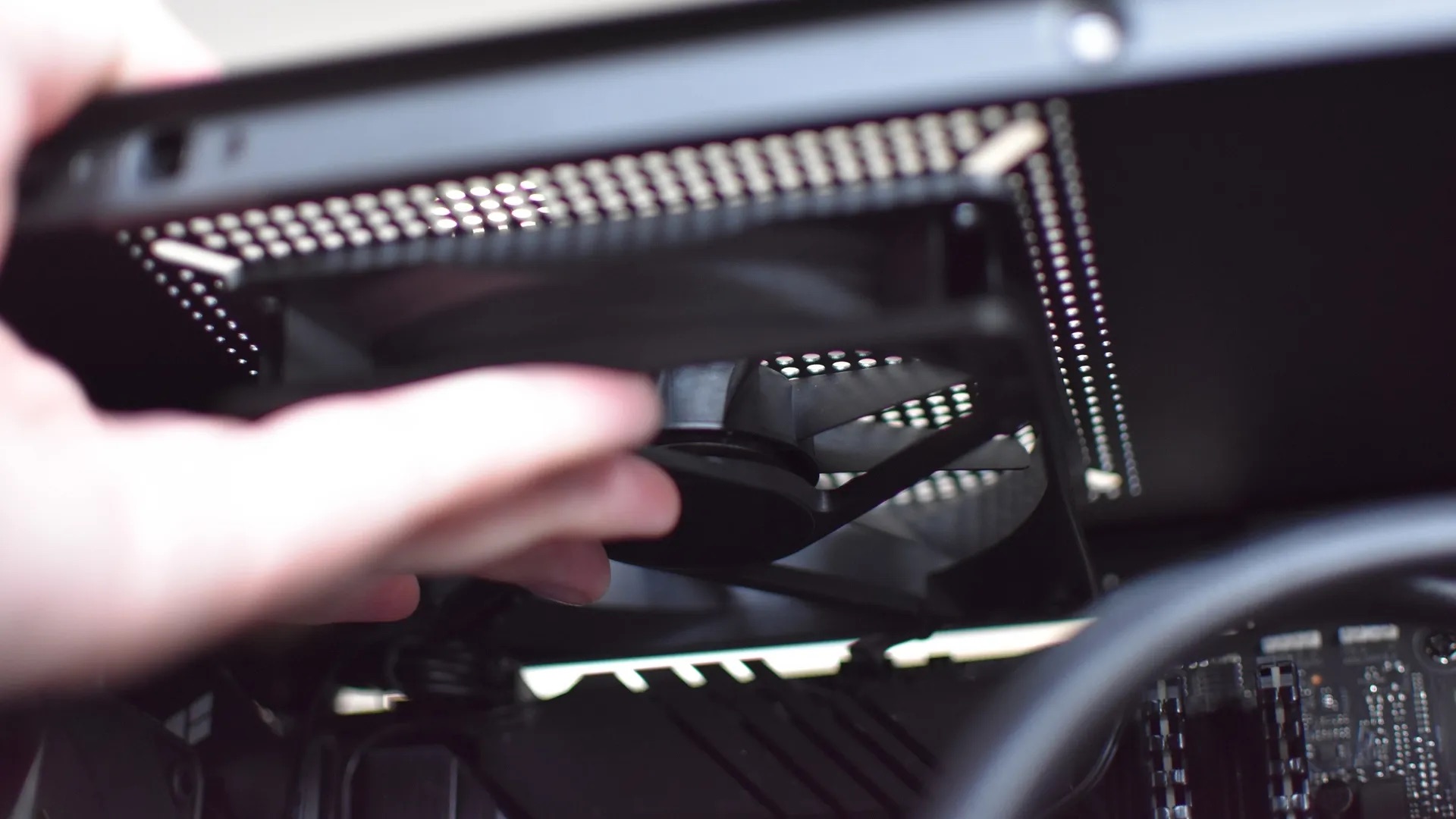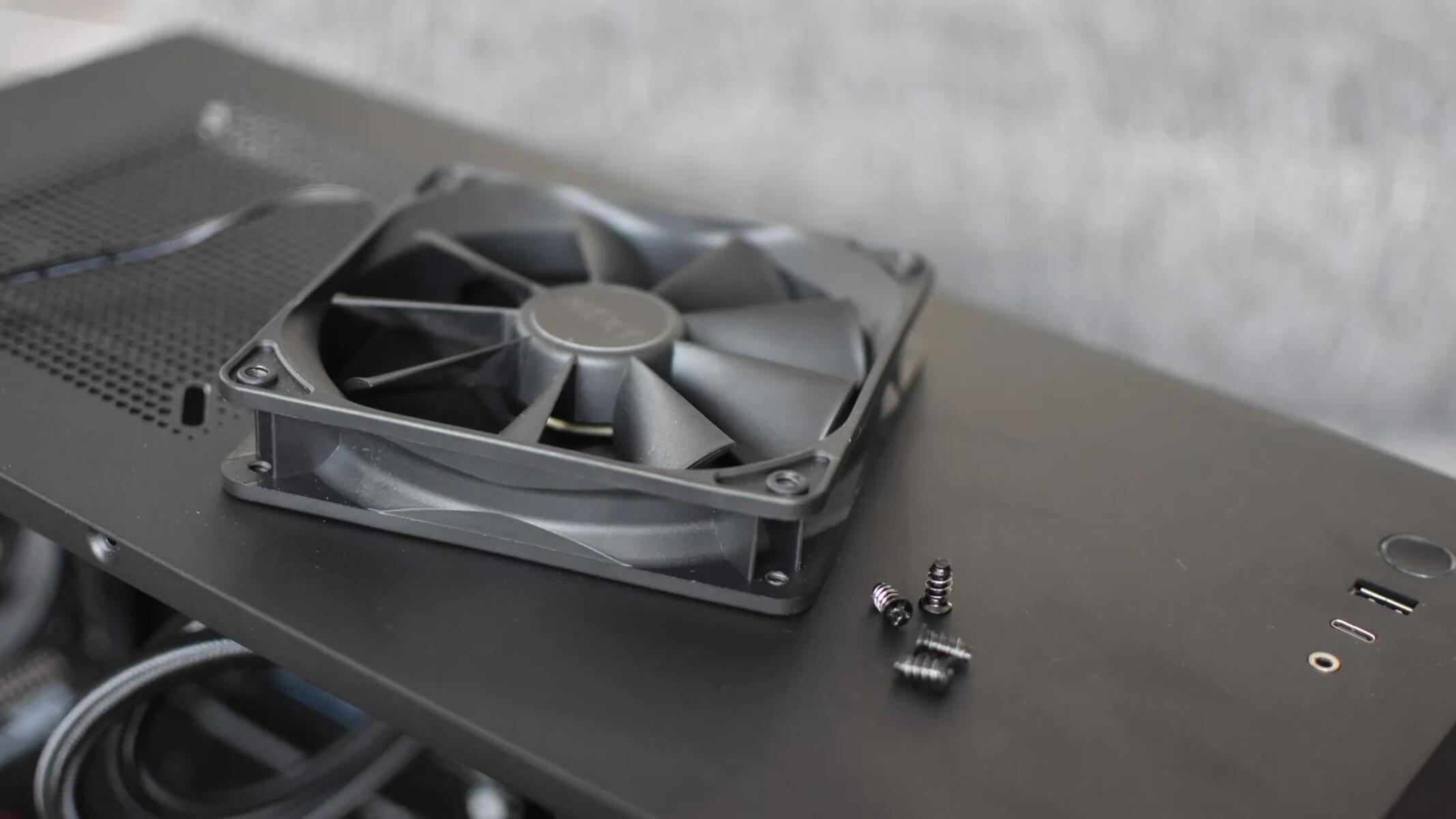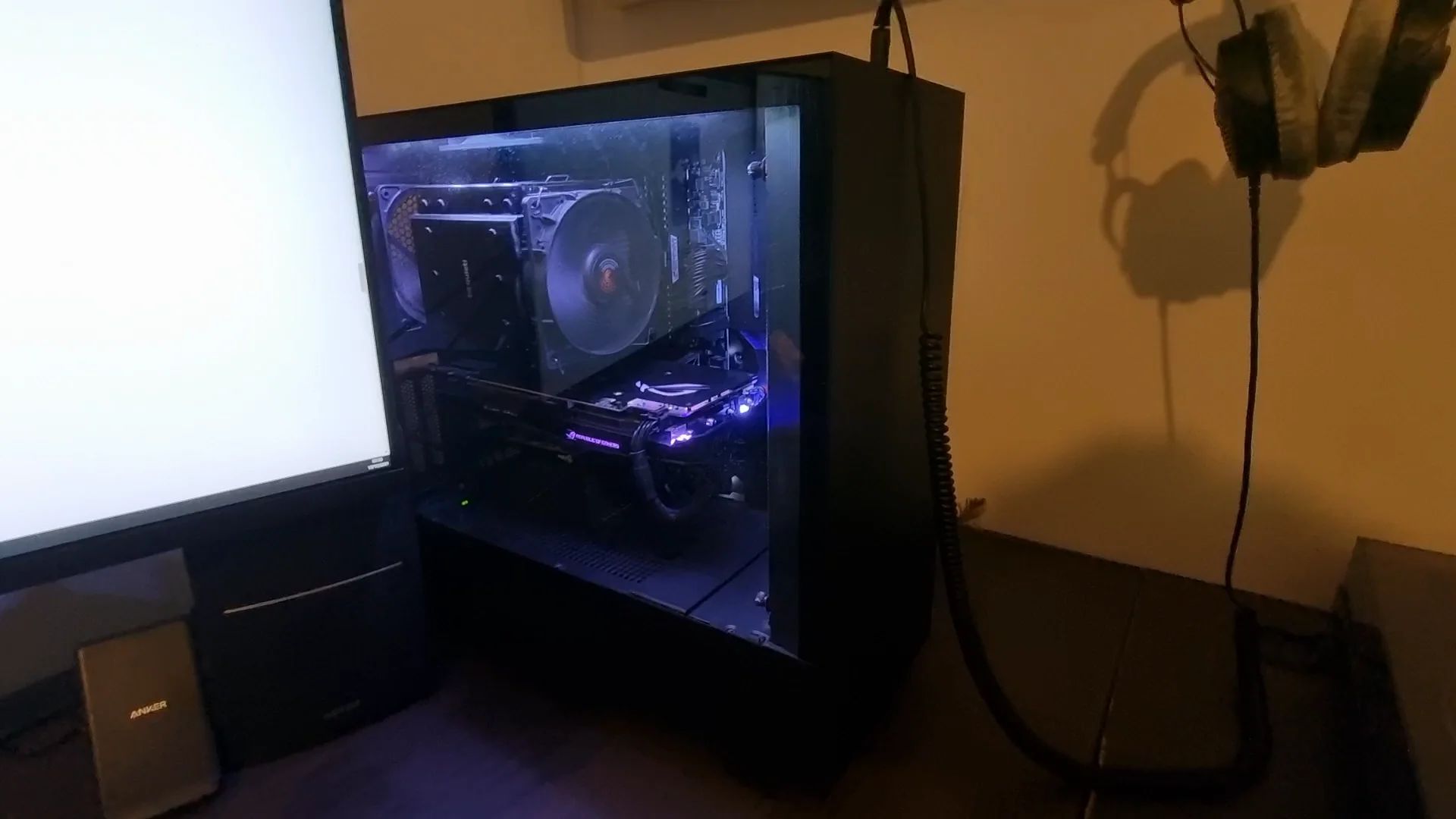Introduction
Welcome to this guide on how to remove rubber mount case fans. If you’re experiencing issues with your computer’s cooling system or simply want to clean the fan for better performance, removing the rubber mounts is an essential step. Rubber mounts are commonly used to secure case fans, and they absorb vibrations, reducing noise and preventing damage to the fan or the computer case.
In this article, we will walk you through the step-by-step process of removing rubber mount case fans. You don’t need to be a computer expert or have any special skills to perform this task. With the right tools and a little patience, you can easily remove the rubber mounts and take care of your case fan.
Before we dive into the steps, it’s important to note that removing the rubber mounts may void your fan’s warranty. So, if your fan is still under warranty, you might want to consider contacting the manufacturer or consulting with a professional. However, if you’re confident in your abilities and understand the risks involved, let’s get started!
Step 1: Gather the necessary tools
Before you begin, it’s essential to have the right tools on hand. Here’s a list of items you’ll need to successfully remove rubber mount case fans:
- Screwdriver (typically a Phillips or flathead, depending on the fan)
- Anti-static wrist strap (optional but recommended)
- Cotton swabs or a soft cloth
- Cleaning solution (isopropyl alcohol or mild soap)
- Compressed air or a small brush for cleaning
The screwdriver is the most critical tool you’ll need for this process. Ensure you have the appropriate size and type of screwdriver for the screws holding the fan in place. An anti-static wrist strap is recommended to help prevent any static electricity discharge that could potentially damage your computer’s components.
Cotton swabs or a soft cloth, along with a cleaning solution, will come in handy if you want to clean the fan or the surrounding area. Isopropyl alcohol is an effective cleaning agent, as it evaporates quickly and leaves no residue. If you don’t have isopropyl alcohol, you can use mild soap diluted with water. Avoid using strong chemicals or abrasive cleaners, as they can damage the fan or case.
Lastly, compressed air or a small brush will help you remove any dust or debris that may have accumulated on the fan or inside the computer case. This step is optional but recommended to maintain optimal airflow and prevent overheating.
Step 2: Shut down the computer and disconnect the power supply
Before you start working on your computer’s internal components, it’s crucial to shut down the system and disconnect the power supply to prevent any potential electrical hazards. Follow these steps to ensure a safe disconnection:
- Save and close any open files or applications you may have.
- Click on the “Start” button in the bottom left corner of the screen, then select “Shut Down” from the options provided.
- Wait for the computer to completely shut down before proceeding. You can confirm by checking if the fans have stopped spinning.
- Once the computer is shut down, locate the power supply unit (PSU) at the back of the computer case.
- Flip the switch on the PSU to the “Off” position, or unplug the power cord from the wall outlet if the switch is not available.
- Ensure that the computer is completely disconnected from the power source.
By shutting down the computer and disconnecting the power supply, you eliminate the risk of electrical shock or damage to the components while working on the case fans. It’s essential to follow this step before proceeding to the next steps.
Step 3: Locate the rubber mounts of the case fan
Once you have ensured that the computer is powered off and the power supply is disconnected, it’s time to locate the rubber mounts holding the case fan in place. Follow these steps:
- Remove the side panel of the computer case. Most cases have screws or latches holding the panel in place. Consult your computer’s manual or look for visible screws or clips on the back or side of the case.
- Carefully remove the side panel by unscrewing the screws or releasing the latches. Set the panel aside in a safe place for reinstallation later.
- With the panel removed, you will have a clear view of the inside of your computer case. Look for the case fan(s) located on the front, rear, or side of the case.
- Inspect the fan to identify the rubber mounts holding it in place. Rubber mounts are often small, stretchy pieces usually attached to the corners of the fan. They resemble small thick rings or grommets.
- Take note of how many rubber mounts are present and their positions on the fan.
It’s important to locate the rubber mounts of the case fan before attempting to remove them. This will allow you to proceed with the next steps more efficiently and avoid any potential damage to the fan or the computer case.
Step 4: Remove the screws or clips holding the fan in place
Now that you have located the rubber mounts, it’s time to remove the fan from the case. This step involves removing the screws or clips that are securing the fan in place. Follow these steps:
- Identify the screws or clips holding the fan in place. They are usually located on the sides or corners of the fan.
- Using the appropriate screwdriver, carefully unscrew the screws counterclockwise. Be sure to keep track of the screws as you remove them.
- If your fan is secured with clips, gently squeeze the clips or release the tabs to loosen them. This may require a bit of force, but be cautious not to apply too much pressure to avoid damaging the fan or the case.
- Once the screws or clips have been removed, the fan should be free from the case.
It’s important to be gentle when removing the screws or releasing the clips to prevent any accidental damage. Take your time and ensure that all screws or clips have been completely removed before attempting to detach the fan from the case.
With the fan now detached, you can proceed to the next step of removing the rubber mounts.
Step 5: Gently detach the rubber mounts from the case
Now that the fan is free from the case, it’s time to gently detach the rubber mounts. These rubber mounts are designed to absorb vibration and reduce noise, so it’s important to handle them with care. Follow these steps to remove the rubber mounts:
- Inspect the rubber mounts to ensure they are in good condition. If any of the rubber mounts appear worn out or damaged, it’s recommended to replace them with new ones for optimal performance.
- Grasp one rubber mount at a time and gently pull it away from the case. Apply even pressure and avoid twisting or pulling too forcefully to prevent damaging the rubber mount or the fan.
- Repeat the process for each rubber mount until they are all detached from the fan and the case.
When detaching the rubber mounts, it’s crucial to be gentle and patient. The mounts may be snugly fit, so avoid using excessive force that could damage the fan or the case. If you encounter any resistance, try wiggling the rubber mount slightly while pulling to release it.
Once all the rubber mounts have been detached, set them aside for cleaning or replacement, if necessary. You are now ready to remove the fan and proceed with any necessary cleaning or maintenance.
Step 6: Remove the fan from the case
With the rubber mounts detached, you can now proceed to remove the fan from the case. Follow these steps to safely remove the fan:
- Gently lift the fan away from the case, ensuring all connections are clear.
- If the fan is connected to any cables or headers, carefully detach them by gently pulling them out. Take note of how the cables are connected to make reinstallation easier later.
- Once all connections are clear, lift the fan out of the case completely.
When removing the fan, it’s important to handle it with care to avoid any damage. Support the fan from both sides to ensure it stays level and secure. Avoid pulling or twisting any cables too forcefully, as they can be delicate.
It’s also a good opportunity to inspect the fan for any visible dust or debris. If the fan appears dirty, you may want to clean it before reinstalling. Refer to the manufacturer’s instructions or our article on cleaning case fans for detailed instructions on how to clean the fan.
By following these steps, you can safely remove the fan from the case and proceed with any cleaning, maintenance, or replacement tasks that may be required for optimal performance.
Step 7: Clean the fan and the case if necessary
Now that the fan has been removed from the case, it’s a good opportunity to clean both the fan and the case if necessary. Dust and debris can accumulate over time, affecting the performance and lifespan of your components. Follow these steps to clean the fan and the case:
- Inspect the fan for any visible dust or debris. If you notice a significant amount of buildup, it’s recommended to clean the fan to maintain optimal airflow.
- Using a can of compressed air, blow the air into the fan blades and the surrounding areas to dislodge any loose dust or debris. Be sure to hold the can upright and use short bursts to prevent any moisture from being released.
- If there are stubborn or hard-to-reach areas, you can use a small brush or cotton swabs lightly moistened with isopropyl alcohol to gently clean the surfaces. Avoid using excessive force or harsh chemicals that could damage the fan or other components.
- Similarly, inspect the inside of the computer case for any dust or debris. Use the compressed air to blow away any loose particles from the case, paying attention to the areas around the fan mounts and other ventilation openings.
- If necessary, you can use a soft cloth lightly moistened with isopropyl alcohol to wipe down the interior surfaces of the case. Be sure to allow ample drying time before reassembling the components.
Cleaning the fan and the case regularly will help prolong the lifespan of your components and prevent overheating. It’s important to perform this step with caution, using appropriate tools and avoiding any abrasive materials that could cause damage.
Once you’re satisfied with the cleaning process, you’re ready to move on to the next steps of reinstalling the fan and reconnecting the power supply.
Step 8: Reinstall the fan using alternative mounting methods (if desired)
After cleaning the fan and the case, it’s time to reinstall the fan. While rubber mounts are commonly used to secure case fans, there are alternative mounting methods available that you can consider. Here’s how you can reinstall the fan using different mounting methods:
- If you prefer to continue using rubber mounts, carefully align the fan with the mounting holes in the case. Gently push the rubber mounts into the corresponding holes until they snap into place. Ensure that the fan is securely attached and does not wobble.
- If your case supports screw mounting, insert the provided screws through the fan’s mounting holes into the corresponding holes in the case. Use the appropriate screwdriver to tighten the screws snugly but not overly tight, as this could damage the fan.
- Some cases may have specialized fan mounting brackets that require additional steps. Consult your case’s manual for guidance on how to install the fan using these brackets.
- If desired, you can also explore aftermarket fan mounting options such as fan mounting brackets or clips. These may provide additional stability and customization options for your case fans.
When reinstalling the fan, it’s important to ensure that it is securely attached to prevent any vibrations or movement that could affect its performance. Take your time to align the fan properly and follow the manufacturer’s instructions or any additional mounting guidelines provided with your case or aftermarket mounts. This will ensure a proper and secure installation.
Once the fan is reinstalled, move on to the next step of reconnecting the power supply and testing the fan to ensure it’s functioning correctly.
Step 9: Reconnect the power supply and test the fan
With the fan securely reinstalled, it’s time to reconnect the power supply and test the fan to ensure it’s functioning properly. Follow these steps:
- Locate the power cable that was originally connected to the fan. It may be a 3-pin or 4-pin connector, depending on the type of fan and the motherboard.
- Align the pins on the power cable with the corresponding slots on the fan’s power connector. Gently push the cable into the connector until it is securely attached.
- If your fan has additional cables for controlling fan speed or RGB lighting, ensure those are also connected correctly according to the manufacturer’s instructions.
- Once all necessary connections are made, locate the power supply unit (PSU) at the back of the computer case and flip the switch to the “On” position. Alternatively, plug the power cord back into the wall outlet if previously unplugged.
- Power on your computer by pressing the power button. Monitor the fan’s operation to ensure it spins smoothly and without any unusual noises or vibrations.
- Access the BIOS or use software monitoring tools to check if the fan is detected and running at the expected speed.
If the fan is functioning properly and the computer boots up without any issues, then congratulations! You have successfully reconnected the power supply and tested the fan. However, if you encounter any issues or the fan is not operating as expected, double-check the connections and consult the manufacturer’s documentation for troubleshooting steps.
It’s also a good practice to monitor the fan’s performance periodically and clean it regularly to maintain optimal cooling and prevent any potential issues in the future.
Conclusion
Removing rubber mount case fans may seem like a daunting task, but with the right tools and a systematic approach, it is a manageable process. By following the step-by-step guide outlined in this article, you can safely remove the rubber mounts, clean the fan and case if necessary, and reinstall the fan using alternative mounting methods if desired.
It’s important to prioritize safety throughout the process. Remember to shut down the computer and disconnect the power supply before beginning any work on the internal components. Additionally, handle the fan and rubber mounts with care to avoid any damage or accidental mishaps.
Regularly cleaning and maintaining the case fans can not only improve their performance but also contribute to the overall longevity of your computer. By removing dust and debris, you can ensure proper airflow, prevent overheating, and minimize the risk of component failure.
Remember to consult your computer’s manual and the manufacturer’s instructions for any specific guidelines related to your case fan model. If you encounter any difficulties or have concerns about your computer’s warranty, it is advisable to seek professional assistance.
Now that you have learned the step-by-step process of removing rubber mount case fans, you can confidently tackle this task as part of your computer maintenance routine. Enjoy a cooler and quieter computing experience!







